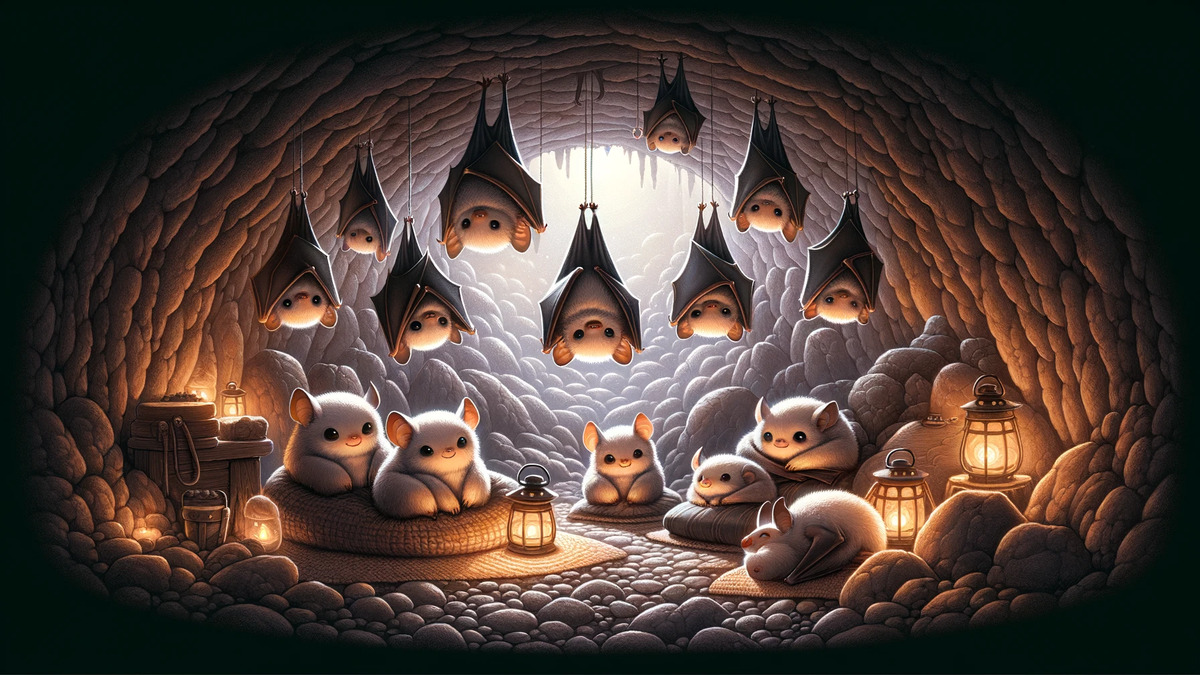Secrets of bats No. 2 share of mammals
When some people hear the word ‘bat’, they may think it is eerie or creepy.
However, I want you to concentrate on their face and body area without looking too much at their hands. Isn’t it pretty cute and puppy-like?
When I was standing at the edge of the zoo observing bats in action, I actually heard a lot of people passing by saying that the bats were “surprisingly cute”. ‘Surprisingly’ is a bit pathetic.
I’d love you to go to the zoo and see them feeding upside down. They are quite cute. It’s like an alf, the more you look at them, the cuter they seem.
Bats are not birds, just as whales are not fish. They are the only mammal capable of sustained flight.
Bats actually account for more than 20% of all mammals.
Among mammals, this makes them the second largest species, after rodents, for which rodents are famous. Bats are not only bird-like, but sit right in the middle of the mammal family.
They are best known for their tropical habitats, but they are also found in temperate zones and occupy a wide variety of habitats. Like birds, they are pollinators, seed dispersers and insect predators. Although they are not birds, their position in the ecosystem is similar to that of birds.
Incidentally, some species, such as the Brackenbutt Cave Meshweaver in Texas, form the largest mammal colony in the world.
Here is a video of it, which is quite surreal, with a lot of fuss behind me the whole time I’m explaining it.
Looking at the body, the bat’s wings are supported by long, slender fingers connected by a thin membrane.
The bat is a living radar. They use echolocation. By emitting high-frequency sounds, hitting objects around them and then catching them with their sensitive hearing, they have a special kind of ability that allows them to draw a sound image of their surroundings.
In contrast to other flying animals such as birds and insects, bats do not lay eggs. This is because, yes, they are mammals.
Births are usually one per year, a low reproductive rate for a small mammal. Unlike birds, bats do not build nests, but roost in a variety of places, including caves, tree cavities and human-made structures. This may be a mammal-like trait, like apes and bears.
Bats hang on for a long time and even give birth upside down. The baby hangs on to its mother. They are thoroughly bat-like from birth.
A little-known fact is that the smallest bat is the bumblebee bat, which weighs less than a cent coin, while the flying fox, which can reach 1.7 metres with its wings spread, holds the title of the largest bat.
Why are bats upside down?
This is largely a question of energy efficiency.
Unlike birds, bats cannot fly away from a standing or sitting position due to their wing structure and weight distribution. This is due to the rather unusual reason that they can use gravity to initiate flight without expending a great deal of energy by hanging on.
You might wonder if they don’t get tired. But rest assured that bats have anatomical adaptations that allow them to hang without exertion. When weight is applied, the claws close and lock around the perch. It is like a keychain.
This allows them to hang securely without the muscles having to keep contracting. They can hang comfortably for long periods of time, even while sleeping.
Many bats roost in areas inaccessible to other animals. Hanging upside down allows them to use a wide range of roosting sites such as cave ceilings, tree hollows and man-made structures for this niche strategy.
Why do bats live in caves?
Conclusion.
Because they are stable.
They go to school with an umbrella when it rains. Sweating to work on a hot day. Cars get stuck in the snow. Climate change is hard. But if you can pay for food and electricity, wouldn’t you want to be in an air-conditioned room all the time?
Here’s the thing.
Caves provide a stable climate with almost constant temperature and humidity levels. This shelter is not only comfortable but also essential, especially for species such as bats that live in tropical areas. It is too hot outside.
And of course, the weather is irrelevant. They are rarely exposed to rain, wind or extremes of weather.
Furthermore, there are many other advantages.
For bats that are raising young or hibernating, a controlled environment helps to save energy.
They are also considerably safer from predators. The deep and often complex structures of caves help protect bats from predators. Most animals cannot go deep without ultrasound. Many predators find it virtually impossible to move effectively through the dark, narrow spaces of caves.
Many species of bats are highly social and live in large colonies for part or all of the year. Cave spaces provide sufficient space for such colonies to roost together. It is a convenient place for social interaction as well as a living space.
However, not all bats live in caves. Bats are highly adaptable and can live in tree hollows, under bridges and in abandoned buildings. A variety of man-made structures can be used as roosts, such as bat boxes, which are specially designed to provide roosts for bats.


コメント